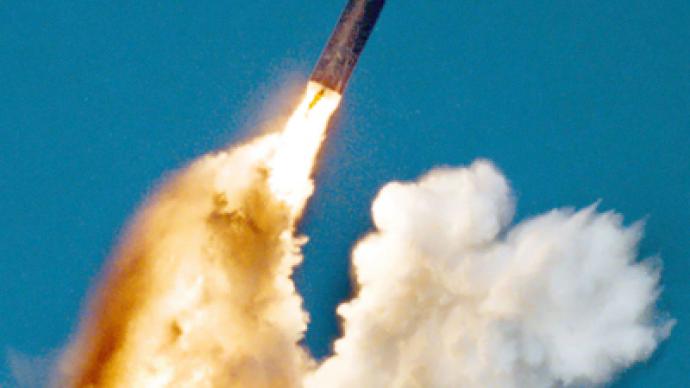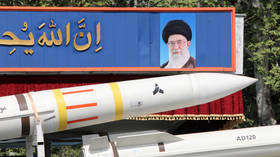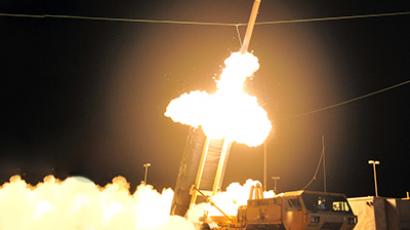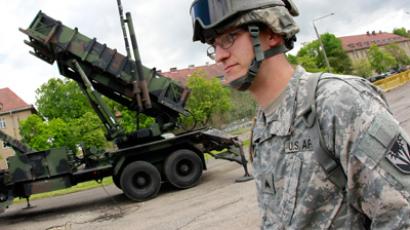Newer START: Obama to unveil nuclear reduction, charm Russia into joining?

US President Barack Obama will reportedly return to one of his key political points, nuclear arms reduction, in his State of the Union address. The American security community favors fewer nukes, but has to win over Republicans and Russia.
Obama will announce an initiative for drastic reduction of American nuclear arsenal on Tuesday following years of consultation with military planners, the intelligence community and national security figures, according to a New York Times report.The president “believes that we can make pretty radical reductions – and save a lot of money – without compromising American security in the second term. And the Joint Chiefs have signed off on that concept,” an official familiar with the deliberations told the newspaper.White House spokesman Jay Carney said in a statement on Monday that the president “made clear publicly his desire to further reduce nuclear arms,” but is not expected to give “a new announcement in the State of the Union address.”Nuclear reduction was a key policy issue for Obama’s first term. It helped him win the 2009 Nobel Peace Prize and culminated in the ratification of the New START treaty with Russia, under which both countries have to reduce their arsenals of deployed nuclear weapons to about 1,550 by 2018.A more drastic reduction would bring down the number of warhead by another third to some 1,000 to 1,100, according to the Center for Public Integrity, a nonprofit journalistic organization. The number would be sufficient to maintain US’ deterrence capability and would not require structural changes to nuclear forces, the consensus in Washington says.The discussion of the offer involved the State Department, Defense Department, National Security Council, intelligence community, US Strategic Command, Joint Chiefs of Staff and office of Vice-President Joseph Biden. While they reached agreeable shrinkage goal last year, it was decided not to push the issue before the November 2012 election, since further nuclear reduction would have cost Obama votes.The initiative may also target weapon categories not covered by the Russian-US agreement, which is called New START. The treaty pretends that strategic bombers can carry only a single warhead instead of up to 20 and does not consider weapons held in storage and smaller-scale tactical weapons.
To go on with the plan the US will negotiate for a similar move from Russia. Unlike New START, which demanded an exhausting battle with Republican lawmakers for ratification, the new round of reduction may not require legislative approval. If the administration sees that gaining assent of two-thirds of the senate is not feasible, an informal understanding with Russia may be chosen instead of an addendum to the treaty.Over February Obama’s national security adviser, Tom Donilon and acting undersecretary of state for arms control Rose Gottemoeller are to visit Moscow for talks. The possible agreement was also discussed on February 2 by Biden and Russia’s Foreign Minister Sergey Lavrov, as both were attending an international security conference in Munich. But according to the Russian daily Kommersant, the initiative was taken “quite coldly”.The reluctance is understandable. Moscow has been disdainful of informal agreements over security issues for years, complaining that the US unofficially promised not to enlarge NATO, only to break the promise. The Kremlin has been struggling to get a formal legally-binding document over the American anti-ballistic missile system in Europe, not satisfied with Washington’s assurance that it is not targeted against Russia.On the strategic level, Russian generals may not see the American target number the way their US counterparts do. Russia has considerably smaller conventional forces, doesn’t have the world’s biggest aircraft-carrying navy capable of delivering airstrikes against virtually any country, nor a network of military bases all over the planet, and does not deploy an ever-growing fleet of killer drones. Reducing strategic nuclear forces or the arsenal of tactical nuclear weapons may be seen as too big a compromise of national security in Russia.The US argument for the reduction is that it will save billions of dollars in the long term. Eliminating a single wing of 150 silo-based missiles would save more than $3 billion over a decade for America, according to the Arms Control Association. The plan under consideration may have several cash-sinkholes axed, including construction of replacement strategic submarines for the Navy and the planned upgrades of weapons research laboratories.The budgetary benefit is in line with the overall American policy of cutting down defense spending, as the country is struggling to slow down the growth of its national debt. Russia may consider spending less on modernizing its nuclear forces, American experts believe. It is currently replacing the older Cold War-time strategic missile types with new ones and is developing new missiles for silo and submarine deployment.














